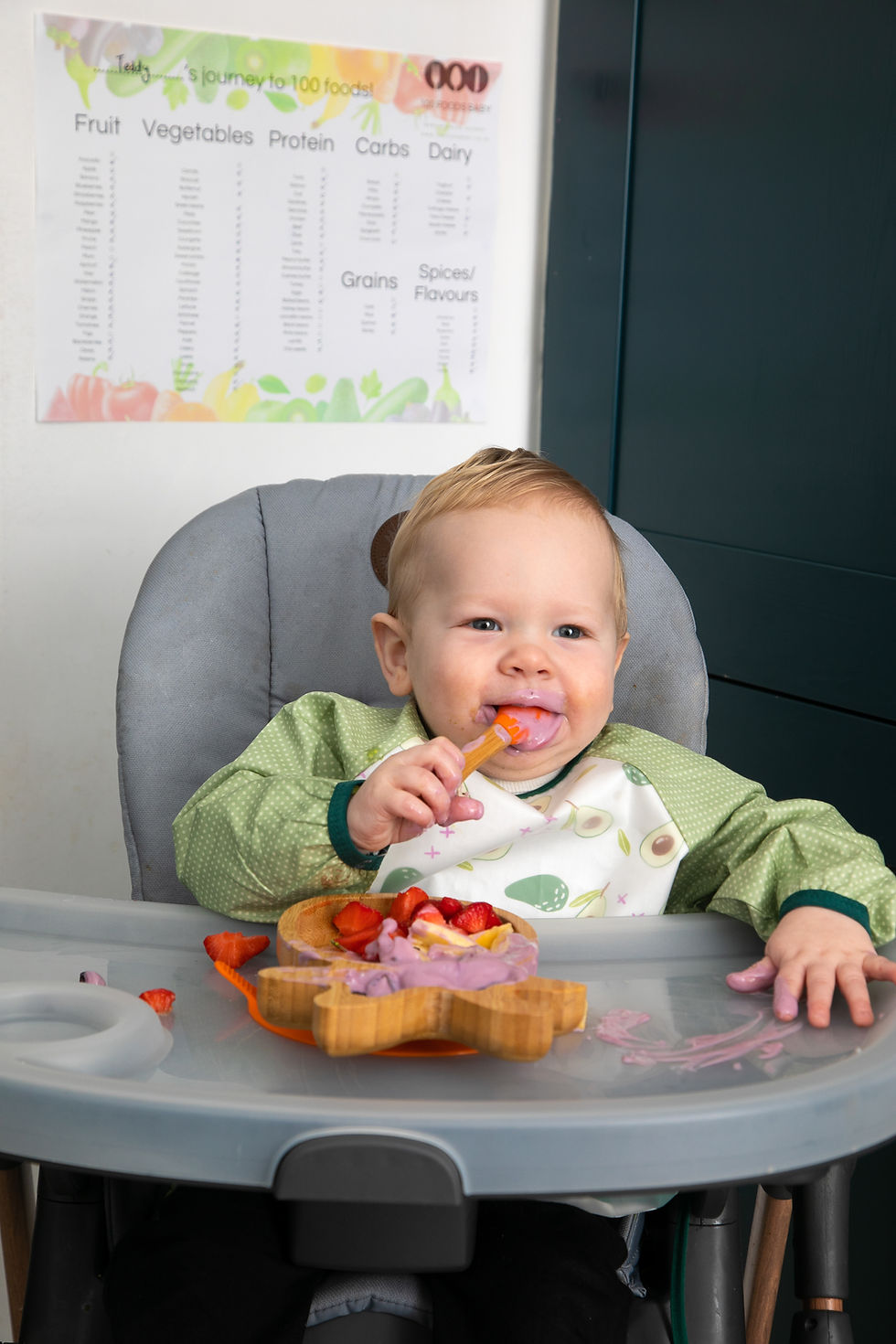10 Best First Foods for Babies (Nutrient-Dense & Easy to Make at Home)
- Charlotte

- Aug 26
- 3 min read
Starting Solids: What Are the Best First Foods for Babies?
Starting solids is one of the most exciting milestones in your baby’s first year. But with so much advice out there, parents often wonder: What should my baby eat first?
The answer is simple: the best first foods for babies are nutrient-dense whole foods that support brain development, provide iron, and introduce new flavours and textures.
And to make the process fun (and stress-free), our Journey to 100 Foods Weaning Chart is the perfect way to track your baby’s first tastes and encourage variety right from the start.
Why Nutrient-Dense First Foods Are Important
By around 6 months, babies need more than just breastmilk or formula. Their iron stores are running low, and they require foods rich in iron, protein, healthy fats, and vitamins to support rapid growth.
Choosing nutritious first foods also helps your baby:
Develop healthy eating habits
Explore a variety of textures and flavours
Reduce fussiness and picky eating later on
10 Nutrient-Dense First Foods for Babies
1. Avocado 🥑
Why it’s great: Healthy fats for brain development.
How to serve: Mash for spoon-feeding, or cut into thick wedges for baby-led weaning (BLW).
2. Sweet Potato 🍠
Nutritional benefits: Vitamin A, fibre, slow-release energy.
How to serve: Steam or roast until soft, then mash or cut into wedges.
3. Eggs 🥚
Nutritional benefits: Protein, iron, and choline.
Allergy tip: Early introduction of egg may help reduce allergy risk.
How to serve: Scrambled, omelette strips, or mashed hard-boiled egg.
4. Broccoli 🥦
Why it’s great: Vitamin C, fibre, antioxidants.
How to serve: Steam florets until soft; babies can hold the stem like a handle.
5. Salmon (Oily Fish) 🐟
Why it’s great: Omega-3 fatty acids for brain and eye health.
How to serve: Steam, bake, and flake carefully (remove bones).
6. Lentils 🍲
Why it’s great: Iron, protein, fibre.
How to serve: Cook until soft and serve as a smooth puree or baby-friendly dhal.
7. Chicken 🍗
Why it’s great: A lean, iron-rich protein.
How to serve: Steam or poach, shred finely, or add to vegetable purees.
8. Greek Yogurt (Full Fat, Plain) 🥛
Why it’s great: Protein, calcium, gut-friendly probiotics.
How to serve: Offer plain or mix with mashed fruit.
9. Blueberries 🫐
Why it’s great: Antioxidants, Vitamin C, fibre.
How to serve: Mash or cut into quarters for safety; mix into porridge or yogurt.
10. Peanut Butter 🥜
Why it’s great: Healthy fats, protein; early introduction may reduce allergy risk.
How to serve: Mix a small amount into porridge or spread thinly on soft toast fingers.
Tips for Parents Starting Solids
Start with iron-rich foods daily (meat, lentils, eggs, fortified cereal).
Offer one new food at a time to monitor reactions.
Mix textures gradually - smooth purees first, then soft lumps and finger foods.
Follow your baby’s lead - weaning is about exploration, not perfection.
Make Weaning Fun With the 100 Foods Challenge 🌟
Your baby may need to try a food up to 10 times before accepting it - so patience and persistence are key.
To help you introduce variety and make mealtimes fun, try our Journey to 100 Foods Weaning Chart. It encourages babies to explore a wide range of foods, helps parents track progress, and turns weaning into a playful family adventure.
The best first foods for babies are nutrient-dense, iron-rich, and easy to prepare at home. By starting with foods like avocado, eggs, and lentils - and tracking your baby’s journey with the 100 Foods Weaning Chart - you’ll build healthy habits that last a lifetime.





Comments